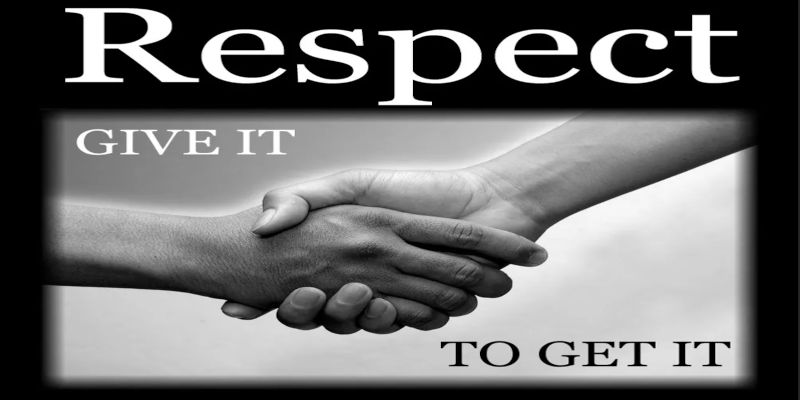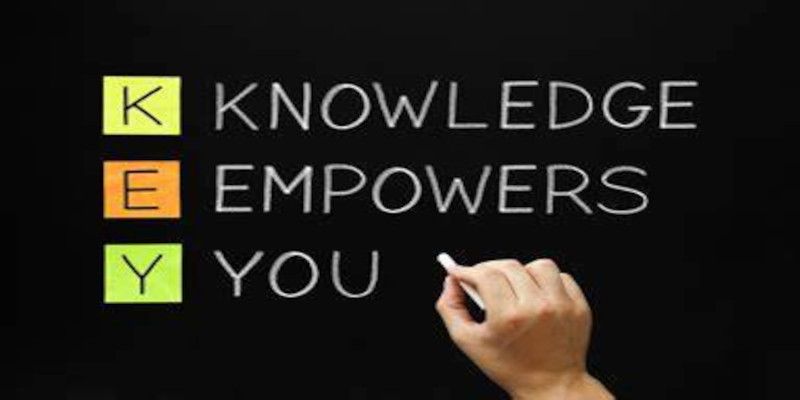Table of Contents
ToggleConflict can be described as beneficial or detrimental depending on the intentions and the execution of said arguments.
That’s why we need to know the difference between positive and negative conflict to get the results we desire.
And while most people regard battle as a negative thing, that’s not necessarily true. There are certainly advantageous aspects as well.
Productive, short-term struggle is the key to solving problems and living together peacefully and cooperatively. It aids in preventing issues and frustrations from getting out of hand.
Is conflict good or bad?

Conflict can be good or bad depending on the intentions for engaging in the conflict, and the results it produces.
But even if the purpose is good, it can have detrimental outcomes if the issue isn’t resolved.
Good conflict management has the aim to eliminate problems. It has the goal to prevent issues from growing larger than they have to be, to understand both parties better, and/or to acquire more knowledge.
Bad conflict arises out of negative intentions. It functions to either create more issues, to make the concerns grow even larger, or to impose one’s point of view and vision on other people.
Is all conflict bad?

No, not all conflict is bad. There is such a thing as a beneficial battle. Especially in the long run.
Of course, even a brief and generally beneficial conflict can still feel awkward and anxiety-provoking for the people involved, even if it is only short. But it is still better than allowing issues to grow larger and worse than they have to be.
How can conflict be bad?
Conflict can be bad if it comes forth out of bad intentions, or if it’s handled poorly.
Some people want to impose their point of view on those around them, others might simply attempt to win the argument to satisfy their ego, and some might just be looking to create drama and more issues.
A debate that arises out of such negative intents can never be positive, since the person starts with bad intentions in the first place. They’re not looking to solve a problem, but are looking to create one or to make the existing ones even larger instead.
Is conflict always negative?

Conflict isn’t always negative. It can be extremely advantageous if you do so with good intentions, and if performed in the right manner.
This brief struggle is typically necessary to solve issues, prevent difficulties from escalating, and gain a better comprehension of each other.
Why is avoiding conflict bad?
Avoiding conflict is bad because it delays the problem rather than solving it.
It allows little issues to snowball out of control, and consequently grow into big concerns. Not only that, it means that small frustrations that are seemingly insignificant at first become large annoyances over time.
Thus, it is beneficial to clear the air as soon as possible. It is often the case that a short debate is advantageous in the time to come, as it settles the issue when the difficulty is still small enough, and letdowns not high enough for even more issues to arise. Thus, the issue is still manageable and solvable.
The potential positive and negative effects of conflict are plentiful. That’s why we should make sure to engage in this struggle in the right manner, and with benevolent purpose.
Possible positive effects of conflict

Conflict can be beneficial if the intentions for engaging in a conflict are to solve an issue, and if it’s handled the right way.
To eliminate problems
The biggest positive of conflict is to resolve problems.
Engaging in short-term conflict is necessary to eliminate present frustrations and issues, so they don’t hinder you in the future.
The bigger picture of a productive struggle should always be to decide something that’s bothering you. To solve a concern or frustration, so to speak.
To prevent concerns from growing larger
Not addressing problems will lead to problems growing larger over time.
To prevent this from happening, you’ll have to engage in a respectful battle with each other.
The goal should be to gain a better understanding of each other’s point of view to prevent the concern from growing to an unneeded, and sometimes overwhelmingly, large size.
To acquire knowledge

Conflict is advantageous when it leads to acquiring new knowledge.
Gaining a new understanding and different points of view means we sometimes engage in conflict with one another to discover the answer that’s closest to the truth.
To understand each other’s point of view better
Another positive effect of conflict is to obtain an improved apprehension of each other’s perspective.
A detailed conflict where both parties get the chance to respectfully elaborate their vision and personal perspective leads to a better understanding of both parties’ different realities.
Others will often see things differently than we do.
This means that engaging in conversation with those around us, and, thus, sometimes engaging in struggle, means expanding our knowledge and coming to an understanding of different points of view.
What is conflict management?

Conflict management, also commonly called conflict resolution as a popular synonym, means having employees that prevent issues from happening in the first place, and possessing a management team that effectively handles and solves difficulties that spring up in the workplace.
Effective conflict management entails many important abilities such as good communication, being empathic, and creative problem-solving behavior among many other attributes, whereas negative conflict management neglects these vital components.
This also involves being able to shut down an argumentative person if the situation calls for it.
Positive conflict management skills

Positive conflict management skills should be the goal for all professionals and people occupying leadership positions in the workplace.
It entails addressing issues instead of avoiding the concerns and allowing them to grow larger and becoming increasingly detrimental to the person, and the organization as a whole.
Employees and people in positions of power alike can benefit greatly from settling workplace problems effectively and maturely that aim to satisfy both parties.
These positive conflict management skills include:
Employing intelligence
Utilizing intelligence can be a vague term. But it means being analytical, and logical, but also compromising, and using good problem-solving behavior to get the best possible results.
It’s better to be a smart and wise leader, and to be calm and methodological to make good decisions, rather than being impulsive and making rash judgments as a result.
Communication

Good communication is key to resolving issues and preventing issues from arising in the first place.
It means being honest, straightforward, yet tactful, and polite.
Don’t assume the worst about others, and that you understand everything there is to know about them. Who knows, they might just surprise you positively.
Fluid communication is indispensable to a well-functioning organization. Just imagine the damage that could happen if one email goes missing and the whole execution of a project turns upside down as a result.
Respect
Respect is essential to build meaningful and long-lasting relationships in life. Unsurprisingly, this is no different at work. It is the pillar upon which trust is built and established.
Giving respect typically leads to earning regard. And even when we have our differences, or don’t exactly see eye to eye, the fact that there’s at least one piece of common ground in the form of respect goes a long way.
Empathy

Empathy encompasses the ability to look at things from another point of view and, thus, feel what the other person is feeling.
Sympathy might be one of the most essential skills regarding conflict governance, especially when working with lots of people, or with highly emotional folks rather than analytical individuals.
Nevertheless, it’s always of utmost importance that we feel understood, even when others don’t agree with our perspective. Thus, one should make it a point to treat others with respect and to put themselves in the other person’s shoes.
Good problem-solving skills
Possessing good problem-solving skills is necessary to resolve issues that come up from time to time and to prevent them from snowballing out of control.
This means applying abilities such as conflict analysis, brainstorming, being goal-oriented, and creative, and monitoring the progress and results of your positive conflict management strategy.
Positive conflict examples

Meet Tom and Brad, our two fictional colleagues we’re going to use as an example of a positive workplace conflict.
Tom and Brad don’t get along well at first. Tom thinks that Brad doesn’t like him because he rarely talks to him. Furthermore, Tom rarely says something about his personal life to Brad.
Tom is extroverted and people-minded. As a result, he spends a lot of time socializing and making small talk with colleagues.
Brad on the other hand is introverted, and goal-focused rather than people-minded. He doesn’t like small talk, and would much rather get straight to work.
Tom, being his extroverted self, decides to talk to Brad about how he feels about the whole situation. Brad explains that he’s introverted and dislikes small talk. He says that he’s rather goal-oriented and prefers keeping to himself to be as productive as possible. He tells Tom that he appreciates the fact that he took the time to talk it through on one.
Brad is relieved to know that there’s no bad blood between him and Tom and gains a new understanding that Tom is simply introverted and prefers keeping to himself.
Tom and Brad engaged in a positive conflict executed in good faith in an attempt to clear the air about the entire stressful situation. Both came to a better understanding and grew closer to each other as a consequence.
This is an example of a positive conflict since both parties win.
Possible negative effects of conflict

Creates more problems
The largest negative effect of conflict is that it can create even more problems than were present in the first place.
Some people misuse conflict or pretend to engage in a “peaceful, productive conflict” to create even more issues.
Those people have bad intentions in the first place and are up to no good.
If you notice being surrounded by such people, it’s generally best to avoid them or avoid engaging in a struggle with them, as it will lead to nothing productive.
Allows problems to grow even larger
A negative conflict makes the concerns grow larger instead of smaller.
There are people out there who use this struggle to inflate the size of the problem in question intentionally. More so than it should, and needs to be.
Again, avoiding engaging in a battle or even talking to this kind of people altogether is advised.
Solely focused on winning the argument

Another negative consequence of conflict is that some people like to engage in battle, simply because they enjoy winning arguments to satisfy their ego.
Those individuals don’t even care if what they’re saying is right or wrong, they just want to win the argument, no matter the cost.
Those folks often behave like this out of insecurity, a need for domination and power over others, and/or because they simply enjoy “winning”.
Imposes one’s point of view and vision
Conflict is bad when it imposes one’s point of view on those around us who think differently than us.
People, at least generally speaking, don’t like things or opinions that are different from them or deviate from the norm.
Ideologically possessed people in particular try to impose their point of view and vision on other people, as they deem their way of thinking and viewing the world as the only correct one. Unable to even consider that they might be wrong, or that others might know something that we don’t.
As a result, all other visions are automatically considered to be wrong, or even worse, dangerous in their point of view just because it differs from their perspective.
This makes ideologically possessed people dangerous, especially in large groups because they rile each other up, and are less likely to think for themselves.
Negative conflict examples

Let’s use Tom and Brad once more, but this time as an example of how a negative conflict could look like.
Tom and Brad don’t get along well at first. Tom thinks that Brad doesn’t like him because he rarely talks to him. Furthermore, Tom seldom says something about his personal life to Brad.
Tom is extroverted and people-minded. Thus, he spends a lot of time socializing and making small talk with colleagues.
Brad on the other hand is introverted and is goal-focused rather than people-minded. He doesn’t like small talk and prefers getting straight to work.
Tom decides to confront Brad about his behavior and tells Brad that he is asocial and that he should learn to cooperate with other people. Brad in turn tells Tom how unproductive he is, and that he should concentrate on his work rather than chitchat. The conflict escalates, and both parties start and end by calling each other names.
Instead of trying to understand one another and each other’s strengths and weaknesses by trying to come to an understanding, they engage in a negative conflict trying to win the argument by calling each other names.
This is an example of a negative conflict since there are no winners, only losers.
Final take

The perceived conflict may be negative, but the resolved conflict is not.
Ultimately, the differences between positive and negative conflict are the results and the intentions.
Staying constructive during arguments can be hard, but keeping an open mind is key to engaging in a productive struggle. The goal should be for both parties to learn something novel from each other. Even though you might still disagree in the end.
In my opinion, bad conflicts are unproductive and are better left aside altogether. That’s because they will lead to nothing of utility or value while demanding a lot of time, and effort, in addition to energy.




1 thought on “Differences between positive and negative conflict”
Comments are closed.